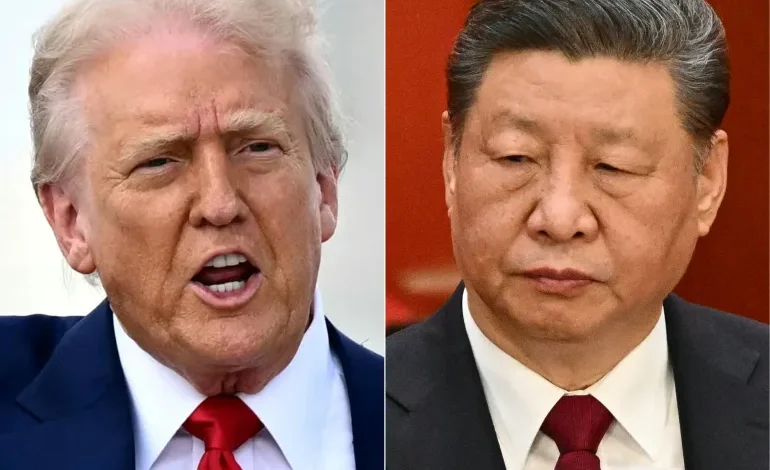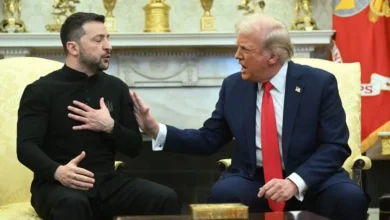Why China has warned countries against ‘appeasing’ Trump in trade deals

The warning comes as countries prepare for talks with the US to seek exemptions from “reciprocal” tariffs that Trump imposed and then later paused on about 60 trading partners.
So what’s this latest verbal spat about, how much clout does China wield in global trade and can Trump drive a wedge between other capitals and Beijing?
What’s the backdrop?
The Wall Street Journal recently reported that Trump was seeking to use tariff talks to push US economic partners to curb trade with China and rein in Beijing’s manufacturing dominance.In return, these nations could secure reductions in US levies and trade barriers. The Trump administration has said it is in negotiations with more than 70 countries.
On Monday, China’s Commerce Ministry hit back, warned other nations that “to seek one’s own temporary selfish interests at the expense of others’ interests is to seek the skin of a tiger”. In effect, it argued that those trying to strike deals with the US – the tiger – would be eaten up themselves eventually.
The ministry also said China would in turn target all countries that fell in line with US pressure to hurt Beijing.
What’s the status of US-China trade?
After Trump suspended his “reciprocal tariffs” on major US trading partners on April 9, he ramped them up on China. US trade levies on most Chinese exports have climbed to 145 percent. Beijing has retaliated with duties of its own at 125 percent on US goods.
Trump has long accused China of exploiting the US on trade, casting his tariffs as necessary to revive domestic manufacturing and return jobs to the US. He also wants to use tariffs to finance future tax cuts.For his part, Chinese President Xi Jinping travelled to three Southeast Asian countries last week to bolster regional ties. He called on trading partners, including Vietnam, to oppose unilateral bullying.
“There are no winners in trade wars and tariff wars,” Xi said in an article published in Vietnamese media, without mentioning the US.
As with other countries in Southeast Asia, Vietnam has been caught in the trade war’s crossfire. It is not only a manufacturing hub itself, but China also frequently uses it to dispatch exports to the US to avoid the tariffs imposed by the first Trump administration on Beijing in 2018.Elsewhere, the Trump administration has begun talks with East Asian allies over the tariffs with a Japanese delegation visiting Washington, DC, last week and South Korean officials set to arrive this week.
Many countries now find themselves stuck between the world’s two biggest economies – China, a large source of manufactured goods and a key trading partner, and the US, a crucial export market.How dependent is the world on Chinese exports?
In a report published in January by the Lowy Institute, a Sydney-based think tank, analysts found that in 2023, about 70 percent of countries imported more from China than they did from the US.
China’s rapid ascent as a trading superpower can be traced back to 2001, the year it joined the World Trade Organization (WTO) and when it started to dominate global manufacturing after years of successful protectionist industrial policies.
During the 2000s, China benefitted from the relocation of international supply chains, turbocharged by substantial inflows of foreign investment, large pools of low-cost labour and an undervalued currency exchange rate.
By 2023, China had become the largest trading partner for at least 60 countries, almost twice as many as for the US, which remained the largest trading partner for 33 economies.
The gap between them is also widening in many countries: The Lowy Institute analysis found that in 2023, 112 economies traded more than twice as much with China as they did with the US, up from 92 in 2018 during Trump’s first trade war.“The critical dependence China has developed around the world, especially in Asia, means that lots [of trading partners] cannot do without China,” said Alicia Garcia-Herrero, an economist at the investment bank Natixis. “From critical minerals to silicon chips, Chinese exports are almost irreplaceable.”










